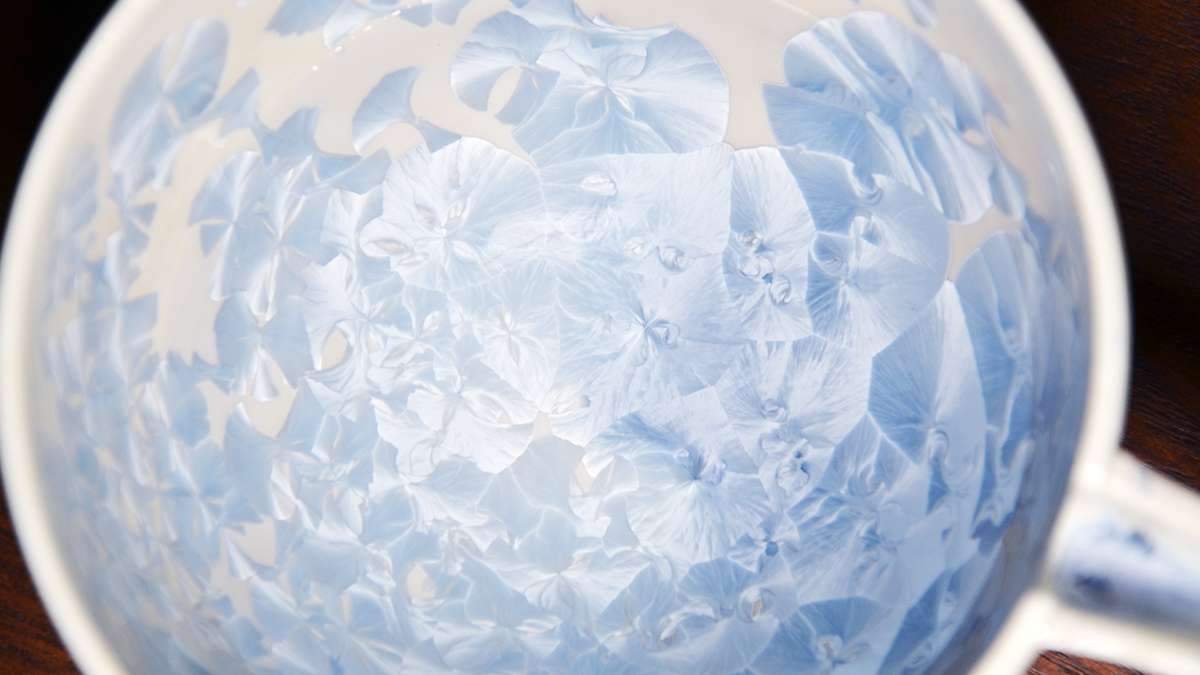무료
설명

크리스탈 유약이있는 상쾌한 그릇.
그것은 다양한 표현을 보여 주며, 화려하지만 진정한 색조가 인상적입니다. 일일 식탁을 밝게 색칠합니다.
이 기능은 혈관 표면에 꽃이 피는 것과 같은 아름다운 패턴이며, 가마에서 용융 및 냉각 과정에서 결정을 형성하는 특성을 갖는 유약을 사용한다는 것입니다. ..
그 중에서도 꽃 결정이 특히 크고 다양한 모양이 나타납니다.
특징 중 하나는 두 가지와 동일한 것을 할 수 없으며 다양한 크리스탈 셰이프를 즐길 수있는 보석입니다.

상표
기요미즈 도자기의 기술 혁신
토 툰
- 1922
- 교토 도자기 · 키 요즈 도자기
- 요시키 Dobuchi.

역사
도자기는 4 세대를 통해 살아남습니다
우리의 현재 소유자는 설립 이후 4 세대입니다.
우리 제품의 훌륭한 외관은 Touan의 원래 개발 된 유약으로 표면을 코팅하여 다른 사람들을 모방 할 수없는 눈에 띄는 기술을 코팅합니다.
또한 우리의 채색과 디자인을 하나만 만드는 것입니다. 우리의 디자인은 식물과 꽃의 아름다움을 캡처하고, 스케치에 대한 우리의 훌륭한 기술을 통해 우리의 고객을 장시간 매혹합니다.
현재, 우리는 매우 가치있는 인테리어 장식을 생산함으로써 시장의 요구를 성공적으로 격리 시켰습니다.

특성
고온에서 베이킹하는 원래 기술
세라믹의 화려한 도료의 대부분은 일반적으로 약 800 도의 상대적으로 낮은 온도에서 베이킹을 통해 생성됩니다.
그러나 TOUAN은 1200도 이상의 고온에서 베이킹을 착취했습니다.
이러한 고온 방법으로 색상을 변화시키는 것이 어렵다고합니다.
그러나 우리의 연구 및 투자는 유리로 코팅 된 것처럼 아름답고 투명한 색상을 만드는 페인트와 유약의 최상의 조합을 파악할 수있게 해줍니다.
우리는 자랑스럽게 우리의 원래의 방법으로 제조 된 하나의 전용 제품을 제시합니다.

고객을 위해
유약의 반짝임을 즐기십시오
교토와 키요미즈 도자기의 전통을 이용하면서 우리는 끊임없이 기술 혁신을 끊고 다른 교토와 키요미즈 도자기와의 선을 끌어 당기는 작품을 계속하기를 계속합니다.
우리는 당신이 유약의 스파클을 즐기기를 바랍니다.
정보
| 제조업체 | 토 툰 |
|---|---|
| 원산지 국가 | 교토, 일본 |
| 기술 | 교토 키요 미즈 상품 |
| 재료 | 도자기 |
| 크기 (약) | Φ4.92 "* H2.36"(Φ12.5 * H6.0cm) |
| 무게 | 0.51 LBS (230g) |
| 생산 능력 | 0 oz (ml) |
| 전자 장비 | 전자 레인지 : 〇, 식기 세척기 : 〇, 직접 화재 : X, IH : X, 오븐 : X |
| 노트 | |
| 배달 시간 | 1 ~ 2 주 (재고가없는 경우 + 1 ~ 2 주) * COVID-19로 인해 배달 시간이 연장 될 수 있습니다. |
Brand history and characteristics
일본 제품이 어떻게 고품질이 될 수 있는지
Payment & Security
지불 정보는 안전하게 처리됩니다. 당사는 신용 카드 정보를 저장하거나 신용 카드 정보에 액세스 할 수 없습니다.
![[밥 그릇] 꽃 크리스탈 (Ginfuji) 찻잔 | 교토 키요 미즈 상품](http://en.thebecos.com/cdn/shop/products/file_259_84a780ed-c36b-47fc-a04d-d5e07e060e80_{width}x.jpg?v=1602627966)
![[밥 그릇] 꽃 크리스탈 (Ginfuji) 찻잔 | 교토 키요 미즈 상품](http://en.thebecos.com/cdn/shop/products/file_259_84a780ed-c36b-47fc-a04d-d5e07e060e80_130x.jpg?v=1602627966)

